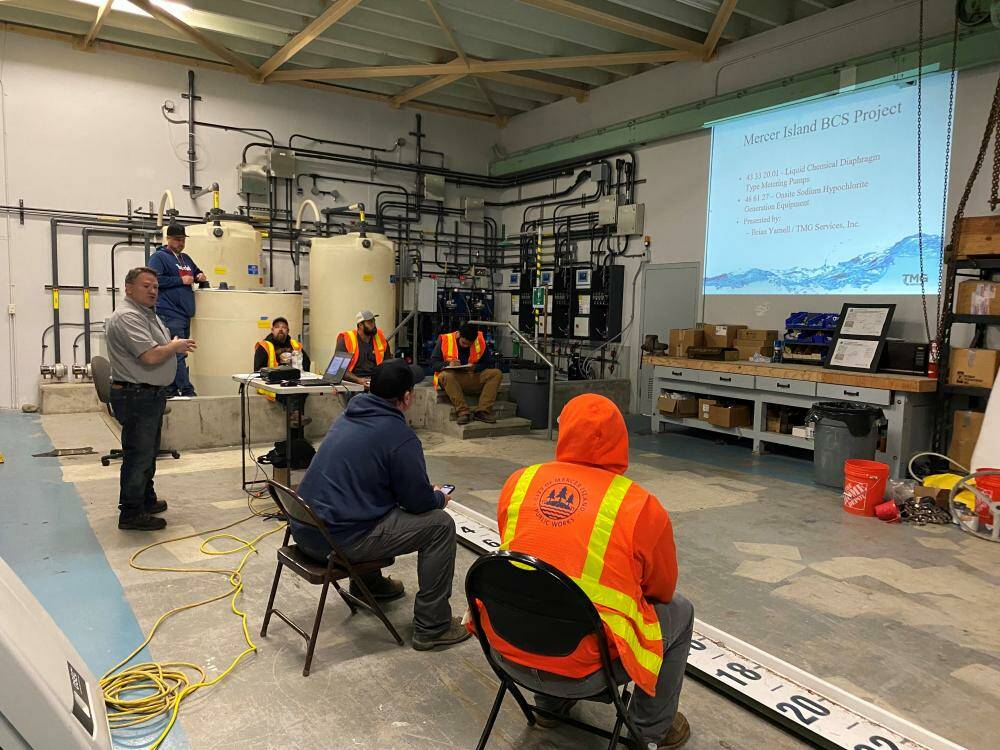Mercer Island’s robust docket of capital and parks projects went under the lens at city council’s regular hybrid meeting on Jan. 16.
Public Works Chief of Operations Jason Kintner led the way with the dual presentation and was joined by other city staffers with expertise in those realms.
Starting with the Capital Improvement Plan, Kintner noted that the city has 70-plus projects on tap for 2024 as they are rolling out a “very very aggressive program right now.” The projects dip into the areas of parks, recreation and open space; streets, pedestrian and bicycle facilities; utilities (sewer, water and stormwater); and general government (equipment, public buildings and technology).
The initial temporary and then permanent closure of city hall due to the discovery of asbestos tiles has heavied the city team’s workload as staffers “pivot from the city hall closure and find temporary spaces and ultimately a long-term home as well,” Kintner said.
As Kintner delved into the capital project update, he noted that during the 2023-24 biennium, the city’s projects are as follows: 15 water system improvement projects with a $25.3 million funding allocation; 10 sewer system projects ($7.9 million in funding); 15 stormwater projects ($2.5 million in funding); 18 transportation improvement projects ($9.3 million in funding); and 23 parks projects ($7.9 million in funding).
Busyness has abounded and there’s heaps more to come project-wise this year, Kintner said.
Kintner focused on a few highlights, including the city completing the longtime booster chlorination station project at the reservoir facility; constructing and opening the Bike Skills Area (BSA) at Deane’s Children’s Park; and completing intersection safety improvements at Sunset Highway/77th Avenue Southeast that feature the addition of pedestrian islands, improved crosswalks that include raised pavement markings and more. The city issued an update on the BSA, noting that the Green Line was recently closed due to loose ground anchors and should reopen in the spring after repairs. As a whole, the BSA remains open as weather allows.
Some major projects on the city’s agenda are water meter replacements, asbestos cement water main replacements, relining the two reservoir tanks, sewer pipe replacement and upsizing, the Luther Burbank docks and waterfront renovation, and turf replacement at the Island Crest Park Athletic Field. Over at Luther Burbank, work will be done in two phases over the next two years, first with the Boiler Building and then with the waterfront and docks.
In a parks levy annual progress report at the Jan. 16 city council meeting, city management analyst Robbie Cunningham Adams explained that the annual parks levy funding increased from $980,122 in 2022 to $1,629,332 last year. That funding goes toward operations and maintenance at Luther Burbank Park and all other parks, Luther Burbank small capital projects, Pioneer Park forest management, open space/vegetation management, 100% funding of playground replacement costs and a portion of forest management projects.
At Luther Burbank in 2023, staffers installed new engineered wood fiber chips around the two high-use playground structures and replaced a slide, repaired several trails that were pummeled by rainstorms and more.
Open space/vegetation management involved massive ivy removal from trees, the planting of 2,490 trees and shrubs and maintenance of 1,100 previously installed native plants.
In the playground replacement sphere, structures set to be replaced over the next six years are at Aubrey Davis, Deane’s Children’s, First Hill, Roanoke and Secret parks. Focusing on Deane’s, Kintner said the tasks will include improving ADA accessibility and inclusivity, improving restroom facilities and more.
Mercer Island’s natural resources project manager Lizzy Stone discussed the city’s progress on the forest management side of the table over the last year.
Specifically in Pioneer Park and Engstrom Open Space, a plethora of people got their gloves dirty while participating in comprehensive weed removal on 19.7 acres, and planted 617 native trees and shrubs.
“All that work was done with the help of contractors, natural resources staff, including our seasonal crew, Washington Conservation Corps crews and many many volunteers,” Stone said.


